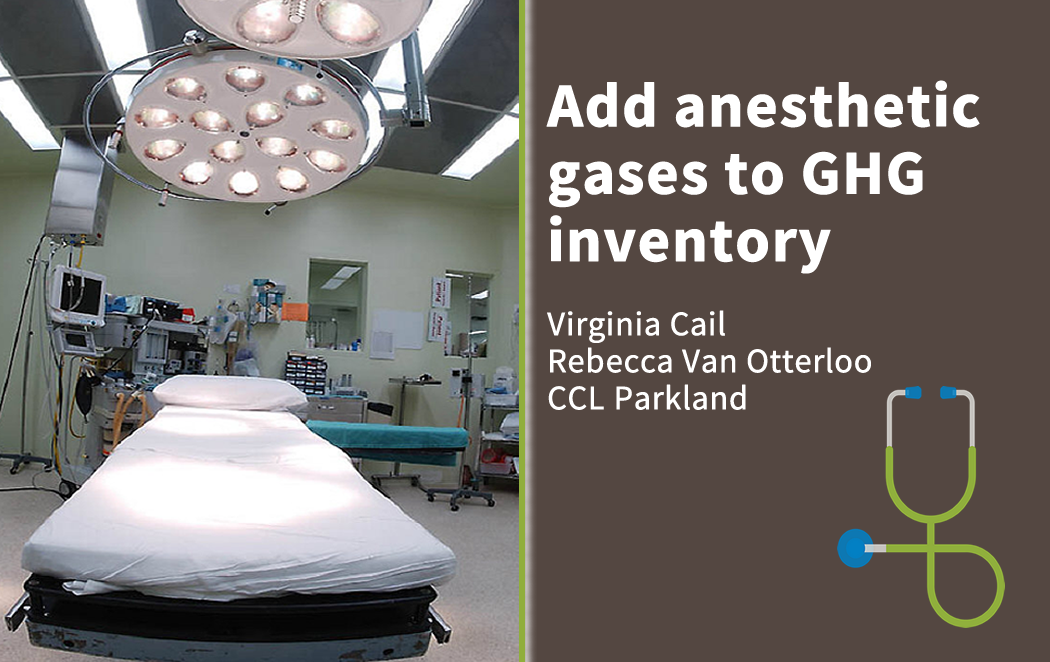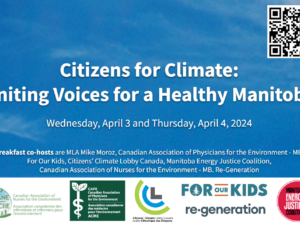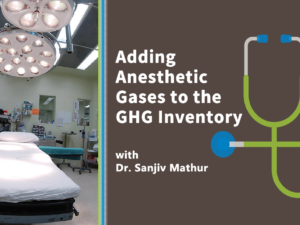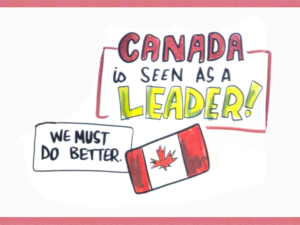The following column by Rebecca Van Otterloo and Virginia Cail (CCL Parkland) was recently published in the Dauphin Herald. Last month’s column was entitled “We the people must come up with real solutions” for human-caused climate change. Ideas written about in 2021 included EVs (Electric Vehicles), e-bikes (Electric Bicycles), Climate-friendly Agriculture and Cargo bikes. In 2022, look for more tangible, practical ideas starting with sevoflurane or sevo for short. The organization Doctors Without Borders has declared that “climate change is the greatest global health threat of the 21st century, so it is incumbent that physicians take a stand to protect their patients.” The Canadian Medical Association (CMA) has said that “climate change and its devastating effects on human health is a priority issue for the CMA” and that “health care professionals should act within their professional settings to reduce the environmental impact of medical activities”. Climate change is remaking our planet at a rapid pace – a pace unprecedented in the earth’s geologic history. Current climatic changes, marked by the increasing number and severity of extreme weather events, are readily observable. The warmest seven years on record have been the last seven years, and, although the data hasn’t been released yet, it seems likely that 2021 continued this disturbing trend. This will have a profound impact on human health in many ways – through compromised water and food security, decreased air quality, increased injuries and mortality from extreme weather events, and spread of vector borne diseases like malaria and Lyme disease to areas outside their previous reach. So what action can we take to lessen the severity of our rapidly changing climate? The answer lies squarely in drastically reducing our greenhouse gas (GHG) emissions, including fluorinated gases. While fluorinated gases make up only a small percentage of the world’s GHG emissions, they are very potent. Real Solutions: Add Anesthetic Gases to GHG Inventory
Why sevo?
Citizens’ Climate Lobby Canada recently hosted a zoom education call with Dr. Sanjiv Mathur, an anesthesiologist working in Sudbury, Ontario. He asked himself the question “what can I do to reduce the Green House Gases (GHG) that are blanketing our planet?” Here are the main points from his presentation, that explain why sevo is a real solution.
Volatile anesthetic gases are used in a variety of treatment fields throughout the healthcare sector (eg operating theatres, dentistry) and in veterinarian practice. These gases are expelled into the atmosphere and contribute to anthropogenic (human-caused) climate change.
In Canada, 4% of GHG emissions come from the health care system, and sevo’s cousin desflurane (or des for short) is responsible for the bulk of the carbon footprint of surgeries.
It is well established in health care, that replacing des with sevo, will significantly reduce GHGs in the operating room without compromising patient care. To put this in practical terms, a seven-hour surgery using sevo produces Carbon Dioxide Equivalents (CDEs) like driving 40 km in an average car. Doing the same surgery using des is like driving 1,920 km!
So, in 2020, Dr Mathur’s hospital, Health Sciences North, removed des from the formulary. They saw a drop of 723 tonnes of CDEs that year.
Currently, very few Canadian hospitals have banned des. Attempts to ban it across Canada, one facility at a time, would be arduous. Another way to have des virtually drop off altogether would be to add volatile anesthetics to Canada’s GHG inventory. They would then be subject to the federal carbon price, projected to be $170 per tonne by 2030. The cost of sevo would increase by $8.39 per bottle, while the price of des by $151.98 per bottle. This would make the purchase of des difficult to justify.
Given this compelling data from Dr Mathur and his colleagues in Sudbury, CCL Canada is asking that volatile anesthetics be included in the GHG Inventory across all of Canada.
If you’d like to see anesthetic gases get added to the GHG inventory, take a few minutes and give your MP a call to suggest it In the meantime, we invite Dauphin Regional Health Centre to join the Canadian hospitals that have already banned des. And while we wait for that to happen, if you have an upcoming surgery, YOU can make a difference by requesting that your anesthetist consider using sevoflurane instead of desflurane, sevo instead of des.
MEDIA HIT Real Solutions: Add Anesthetic Gases to GHG Inventory
Home » CCL Canada News » MEDIA HIT Real Solutions: Add Anesthetic Gases to GHG Inventory
MEDIA HIT Real Solutions: Add Anesthetic Gases to GHG Inventory
Posted on February 10, 2022 in MediaHit






